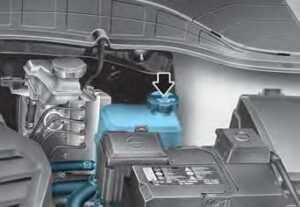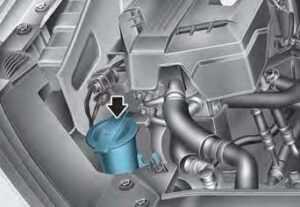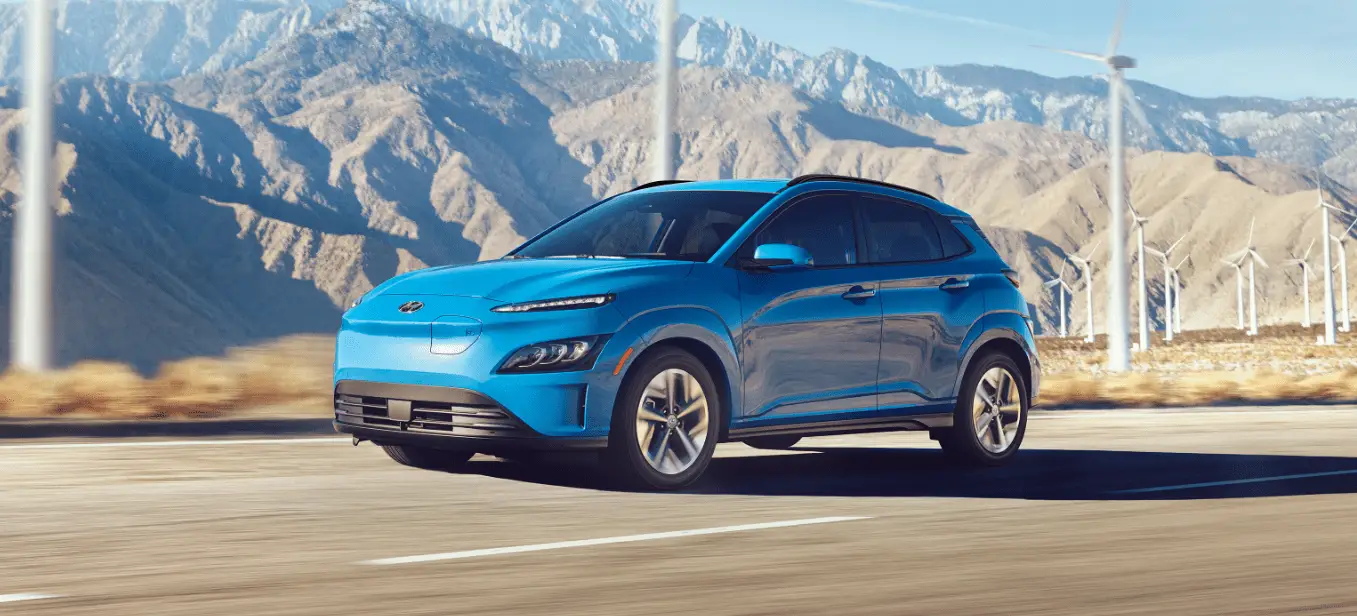2023 Hyundai Kona-EV Explanation Of Scheduled Maintenance Items User Guide
The 2023 Hyundai Kona-EV has specific maintenance needs that are specific to its electric architecture, As an example of innovative automotive engineering. To get the best performance and longevity from the vehicle, you need to understand its unique maintenance schedule, which is different from regular vehicles. One important part of this is keeping an eye on fluid levels, such as the specialized coolant that controls the temperature of the battery and motor.
2023 Hyundai KONA Specs, Price, Features, Milage
Cooling System
Check the cooling system parts, such as a radiator, coolant reservoir, hoses, and connections for leakage and damage. Replace any damaged parts.
Coolant
The coolant should be changed at the intervals specified in the maintenance schedule.
Reduction Gear Fluid
The reduction gear fluid should be inspected according to the intervals specified in the maintenance schedule.
Brake Hoses and Lines
Visually check for proper installation, chafing, cracks, deterioration, and any leakage. Replace any deteriorated or damaged parts immediately.
Brake Fluid
Check the brake fluid level in the brake fluid reservoir. The level should be between the “MIN” and “MAX” marks on the side of the reservoir. Use only hydraulic brake fluid conforming to DOT 3 or DOT 4 specifications.
Brake Pads, Calipers and Rotors
Check the pads for excessive wear, discs for run out and wear, and calipers for fluid leakage.
For more information on checking the pads or lining wear limit, refer to the HYUNDAI web site.
(http://service.hyundai-motor.com)
Suspension Mounting Bolts
Check the suspension connections for looseness or damage. Retighten to the specified torque.
Steering Gear Box, Linkage &
Boots/Lower Arm Ball Joint With the vehicle stopped, check for excessive free-play in the steering wheel. Check the linkage for bends or damage. Check the dust boots and ball joints for deterioration, cracks, or damage. Replace any damaged parts.
Drive Shafts and Boots
Check the drive shafts, boots and clamps for cracks, deterioration, or damage. Replace any damaged parts and, if necessary, repack the grease.
Air Conditioning Refrigerant/ Compressor
Check the air conditioning lines and connections for leakage and damage.
Coolant, Brake Fluid, and Washer Fluid
Coolant

Check the condition and connections of all cooling system hoses and heater hoses. Replace any swollen or deteriorated hoses.
The coolant level should be filled between the MAX and the MIN marks on the side of the coolant reservoir when the parts in the motor compartment are cool.
If the coolant is low, have the vehicle inspected by an authorized HYUNDAI dealer. Use only designated coolant water for electric vehicles, adding other types of water or antifreeze can damage the vehicle.
WARNING
Since specific coolant water (Blue color, Low conductivity) is applied for electric vehicles, replenishment of other antifreeze or water may cause problems for the vehicle.
Do not mix with normal green coolant.
WARNING
The electric motor for the cooling fan may continue to operate or start-up when the vehicle is not running and can cause serious injury. Keep hands, clothing, and tools away from the rotating fan blades of the cooling fan. The electric motor for the cooling fan is controlled by vehicle coolant temperature, refrigerant pressure, and vehicle speed. As the vehicle coolant temperature decreases, the electric motor will automatically shut off. This is a normal condition.
BRAKE FLUID
Checking the Brake Fluid Level

Check the fluid level in the reservoir periodically. The fluid level should be between MAX and MIN marks on the side of the reservoir. Before removing the reservoir cap and adding brake fluid, clean the area around the reservoir cap thoroughly to prevent brake fluid contamination. If the level is low, add fluid to the MAX level. The level will fall with accumulated mileage. This is a normal condition associated with the wear of the brake linings. If the fluid level is excessively low, have the system checked by an authorized HYUNDAI dealer.
Information
- Use only the specified brake fluid. Refer to “Recommended lubricants and capacities” in chapter 2.
- Before removing the brake filler cap, read the warning on the cap.
- Clean the filler cap before removing it. Use only DOT3 or DOT4 brake fluid from a sealed container.
WARNING
If the brake system requires frequent additions of fluid this could indicate a leak in the brake system. Have the vehicle inspected by an authorized HYUNDAI dealer.
WARNING
Do not let brake fluid enter your eyes. If brake fluid gets in your eyes, flush your eyes with clean water for at least 15 minutes and get immediate medical attention.
NOTICE
- Do not allow brake fluid to contact the vehicle’s body paint, as it will result in paint damage.
- NEVER use brake fluid that has been exposed to open air for an extended time, as its quality cannot be guaranteed. It should be disposed of properly.
- Don’t put in the wrong type of fluid. A few drops of mineral-based oil in your brake system can damage system parts.
WASHER FLUID
Checking the Washer Fluid Level

Check the fluid level in the washer fluid reservoir and add fluid if necessary. Plain water may be used if washer fluid is not available. However, use a washer solvent with antifreeze characteristics in cold climates to prevent freezing.
WARNING
To prevent serious injury or death, take the following safety precautions when using washer fluid:
- Do not use coolant or antifreeze in the washer fluid reservoir. Coolant can severely obscure visibility when sprayed on the windshield and may cause loss of vehicle control resulting in an accident or damage to paint and body trim.
- Do not allow sparks or flames to contact the washer fluid or the washer fluid reservoir. Washer fluid may contain alcohol and can be flammable.
- Do not drink washer fluid and avoid contact with skin. Washer fluid is poisonous to humans and animals.
- Keep washer fluid away from children and animals.
FAQs
Scheduled maintenance frequency can be found in the owner’s manual, but typically, EVs have fewer maintenance requirements compared to combustion engine vehicles.
Electric vehicles often use a special coolant for battery thermal management. It’s vital to use the manufacturer-recommended coolant for the Kona-EV.
Hyundai generally recommends checking and replacing brake fluid at specific intervals. The exact timeframe can be found in the vehicle’s maintenance schedule.
While most standard washer fluids are compatible, it’s always a good practice to check the owner’s manual or consult with a Hyundai dealership.
Typically, the brake fluid type is consistent across both EVs and conventional vehicles, but always refer to the vehicle’s specifications.
Following Hyundai’s maintenance schedule and best practices, such as avoiding consistent deep discharges, can promote battery longevity.
Scheduled maintenance for EVs often includes inspections of the battery, brake system, tires, and various safety checks. Specifics can be found in the maintenance section of the owner’s manual.
The owner’s manual will provide guidance on checking coolant levels and conditions. Remember to always check when the vehicle is cool to avoid injury.
Yes, the Kona-EV employs regenerative braking. While this can result in reduced wear on the brake pads, it doesn’t necessarily extend the life of the brake fluid. Regular maintenance checks are still essential.
While many elements might be familiar, the exact location of components can vary. The owner’s manual will provide a detailed diagram of the engine bay and component locations.
Useful Links
View Full User Guide: Hyundai Kona-EV 2023 User Guide
Download Manuals: https://owners.hyundaiusa.com/us/en/resources/manuals-warranties.html
2023 Hyundai KONA Specs, Price, Features, Milage


